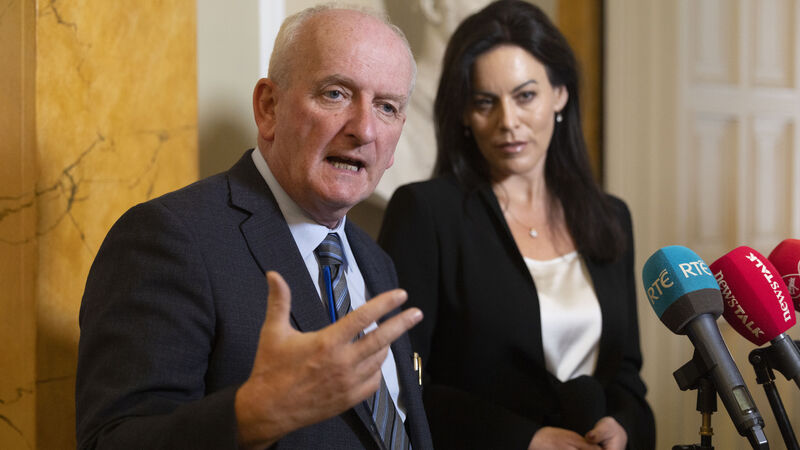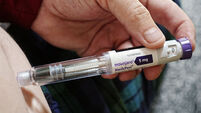HSE CEO claims 'previously hidden need' behind surge in gynaecology waiting lists

The matter was raised this with HSE chief executive Bernard Gloster (left) and health minister Jennifer Carroll MacNeill (right) over two Oireachtas Health Committee sessions. Photo: Sam Boal/Collins Photos
The number of women and girls on gynaecology waiting lists has surged by 13% since the pandemic, according to new figures.
The HSE has admitted new specialist clinics have huge patient numbers due to “previously unmet need or hidden need”.
Some 34,081 women are waiting on an outpatient gynaecology appointment including 567 teenagers. Among the teens 18 have been waiting longer than 18 months, the Oireachtas Health Committee heard.
Women may need help with bleeding, lesions caused by HPV, endometriosis and other issues. Sorca Clarke, committee member and Sinn Féin TD, said figures shared with her show a 13% increase in numbers between 2021 and now.
“What has gone wrong here?” she asked. “Why is such a high number of women waiting on an outpatient gynaecology appointment, particularly when we know the level of women who are diagnosed with very serious medical conditions through gynaecology appointments?”
She raised this with HSE chief executive Bernard Gloster and health minister Jennifer Carroll MacNeill over two committee sessions.
Mr Gloster pointed to better access to a network of gynaecology clinics, saying: “We are now seeing a growth in the increase of referrals to them because of the availability of the centres.
These clinics began rolling out in 2020.
Level 1 clinics, like in Cork University Maternity Hospital, are full-time and could take up to 3,000 patients annually. Level 2, such as in Waterford hospital, run two to four days a week and offer up to 1,500 appointments annually.
Ms Clarke pointed out however “over 7,000 women have been waiting over six months” and asked what is being done for them.
In response Jennifer Carroll MacNeill said: “The lists have gone up but the times have come down albeit not from a great starting point but they have come down considerably.
“That is largely due to the ambulatory see-and-treat gynaecology clinics which are working well.”
She added a framework for endometriosis treatment will soon be published. This was expected in April 2024.
Mr Gloster said: “We are getting enormous referrals, massive numbers. I would say that was a previously unmet need or hidden need that wasn’t on any list but the time people are waiting is much less, particularly where those clinics are.”
In relation to the teenagers, he conceded "we started from a very low base" saying they intend further expansion. “GPs are telling us gynecology is one of the greatest, now constant, demands coming to their surgeries," he said.












